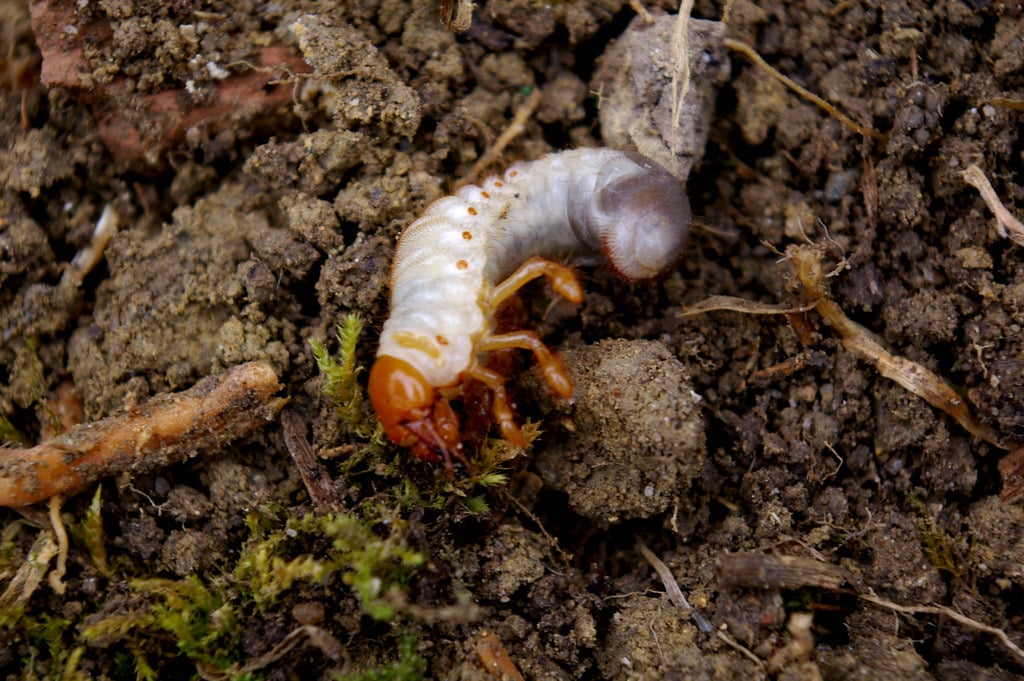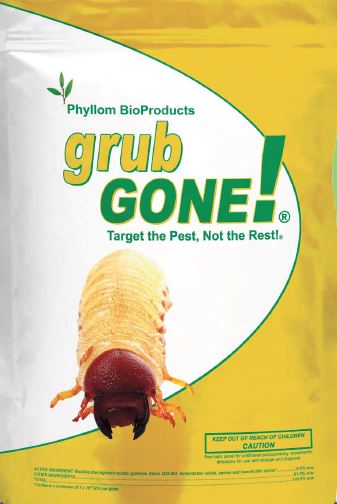
The invasive European chafer beetle species has made BC’s lower mainland and other regions home. However, in Vancouver, the health bylaw prohibits the use of neonicotinoid pesticides. Vancouver residents, businesses, and organizations must find alternatives to treating these beetles naturally. We recommend using GrubGone, a natural solution to treating the European chafer beetle.
Here’s what you need to know about chafer beetles and how to treat them.
European chafer beetles can reproduce rapidly. They feed on roots of all kinds of plants including turf and plants. This destroys the roots and ultimately, the plants themselves.
When you have an infestation, the damage to your turf and grass can be seen in fall and early spring. Some signs of infestation include:
However, sometimes, it can be hard to tell since the damage can be masked by an abundance of moisture that occurs during the spring and fall months. In drier weather, you’ll be able to see brown patches on your grass.
With a lifecycle of one-year, their new eggs begin hatching in July. The new grubs begin to feed on grass and turf from August to September. From October to December, the grubs begin to grow as they continue feeding. From January to March, you’ll see the damage to your grass and turf continue as the grubs continue to feed and grow. From April to June, the grubs will grow into full-grown beetles.
In June, the female chafer beetles deposit up to 50 eggs back into the soil. This is the time when there will be the least amount of damage to your turf and grass.
The grubs measure about 2 to 2.5 cm. The grubs are soft, white, and C-shaped with tan-coloured heads and six prominent legs.

GrubGONE! is a natural and safe bio-insecticide. It is the first Bacillus thuringiensis galleriae (Btg) that helps to control turf grub. GrubGONE is equivalent to using chemicals to treat chafer beetles. Unlike using Nematodes, a popular way used to treat chafer beetles, the success rate is closer to 90% and can be applied more frequently. Namatodes have a 60% success rate. It can be applied throughout the summer in 3-week intervals.
Some of the benefits of using GrubGONE include:
There are other ways you can prevent chafer beetles including:
Want to know if GrubGONE is right for you? Contact us today.
Order fresh sod now or request a custom quote for your project.
Save with a Yearly membership. Custom fertilizer program. Fertilizer, topsoil, seed delivered to your door before you need it. Don’t forget, we will remember for you!
Western Turf Farms Abbotsford
39183 No.5 Road Abbotsford, BC V3G 2G3
Western Turf Farms Langley
7880 240 Street Langley, BC V1M 3P9
© Copyright 2025, all rights reserved by Western Turf Farms. By using our website you agree to our Disclaimer and Privacy Policy.